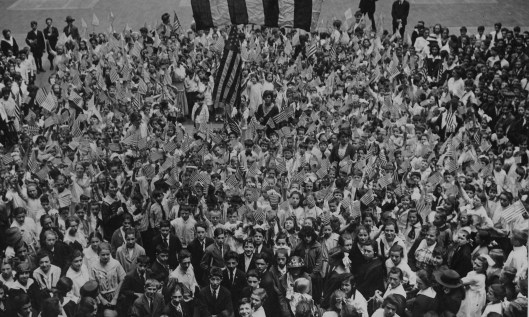
Albert Bierstadt began “Valley of the Yosemite” in 1863 and completed the small painting, less than 1′ x 2′, in early 1864. That spring it sold at the New York Sanitary Fair for $1600. In June Congress and Lincoln granted Yosemite and Big Tree Grove to California and Frederick Law Olmsted studied the area for the state over the next year. The painting today is in the collection of the Museum of Fine Arts Boston.
Abraham Lincoln signed the Yosemite Grant Act on this date in 1864. This legislation deeded Yosemite and the Mariposa Big Tree Grove to the state of California. It is interesting to note that Congress wrote and President Lincoln signed the measure in late June 1864, just days after the Overland Campaign in which so many men had been killed or wounded in ghastly ways. Even with the war far from decided people were looking ahead.
I tell the story a little bit in my book. The painting we see here was begun by Albert Bierstadt in 1863 and finished in 1864. While out west Bierstadt was also writing to his good friend John Hay, Lincoln’s secretary, back in Washington about the scenic beauty of California. It is not difficult to imagine Hay describing all this to his boss in the White House. As it happened, another man from back east was in California in 1863: Frederick Law Olmsted. He had resigned his position as secretary of the United States Sanitary Commission in September to take a job running a mine in Mariposa. Olmsted was burned out from his work with the Sanitary Commission and got as far away as he could by going out west. Soon after Lincoln signed the Yosemite legislation, Frederick Law Olmsted found himself part of a commission whose job it was to survey Yosemite and the Big Tree Grove and create for California officials a plan the state might use to make these protected parklands. Olmsted and his colleagues went about their task and submitted a report in August 1865. California officials ultimately tabled Olmsted’s report, deeming his provisions too expensive.
As for the painting we see above, it quickly ended up in New York City just after Albert Bierstadt completed it in early 1864. That spring officials of the Sanitary Commission sold the art work during the Metropolitan Sanitary Fair. The fair, like others held in various locales, raised funds for the Sanitary Commission to do its work tending the needs of soldiers out in the field. Albert Bierstadt’s “Valley of the Yosemite” sold for $1600, the highest sum for any artwork on sale for charity at the New York Sanitary Fair.
(image/Museum of Fine Arts Boston)











